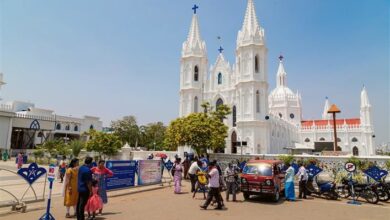An Excursion to the Holiest City in India: Ujjain
An Intriguing Account of Ujjain’s Rise to Fame
Ujjain is located in the center of India. This settlement, situated on the banks of the Shipra River, is historically and spiritually significant. As one of the holiest cities in India, it’s little wonder that so many people are captivated by its magnificence. This essay will shed light on the various reasons why Ujjain is considered a holy site by many.

The City of Temples: A Spiritual Journey Through Ujjain
Is the sound audible from the Mahakaleshwar Temple? The sight of the Mahakaleshwar Temple is enough to halt the heart. Here, we see Lord Shiva as Mahakal, his ferocious avatar. This temple is very sacred to the Hindu faith, as it is one of twelve Jyotirlingas in India. Pilgrims go from all over the world to see the majestic spires, which are enough to make anybody feel insignificant and vulnerable, but that’s not all. As they participate in age-old rites with other believers, visitors are transported to a world straight out of Hindu mythology, and the tales told on the walls go on forever.
The Kal Bhairav Temple, which is considered to be an alternate manifestation of Lord Shiva, is next to the Mahakaleshwar Temple. The temple is devoted to the terrifying god Bhairav. The faithful believe that by paying homage to Kal Bhairav, they would be shielded from harm and will achieve success in everything they set their minds to. Until you see how terrible this figure really is, the sight of colorful flags set against an even more colorful backdrop makes the image look quite happy.
The Chintaman Ganesh Temple is located as you go downstream from the river. Dedicated to Lord Ganesh, the deity of knowledge and wealth, who has an elephant as a head. Many have said that this temple has granted their desires and erased whatever difficulties they had, all because of some enigmatic power that dwells behind these walls. Seekers of enlightenment and those seeking heavenly benefits may find solace in this serene sanctuary, where they can commune with other believers in a state of deep meditation.
2. Learning About Ujjain’s Past: A Journey Through Time
Vikramaditya’s hometown: Ask Ujjain—thousands of years is a big mark! Located close to the Shipra River, where King Shiva discovered it,. A golden period was ushered in when King Vikramaditya eventually assumed the throne. Its people supposedly achieved greatness and enlightenment as a result of this. Of course, skepticism is inevitable when it comes to any excellent tale, but it’s impossible not to believe in something so stunning.
Nothing beats a well-built stupa, and Ashoka’s Stupa is no exception. Without a doubt, Ujjain was not afraid to construct anything monumental! Emperor Ashoka began dispersing these artifacts around India in the third century BCE to publicize his devotion to Buddhism. Seeing them up close is an incredible experience, particularly when you consider how ancient they are, even if they are ubiquitous.
Holy Waters: Celebrations & Ceremonies Parallel to the Shipra River
One of the world’s greatest religious gatherings, the Simhastha Kumbh Mela, takes place every twelve years in Ujjain. On the banks of the Shipra River, millions of pilgrims and sadhus gather. They cleanse themselves spiritually by bathing in its holy waters and engaging in rituals. Faith, dedication, and reviving one’s spiritual life are the fundamental themes of this festival. Everyone is welcome to come and partake in the ancient Hindu rituals and seek blessings.
During the lucky days of the Kumbh Mela, there is a ritual known as the Shahi Snan, which is also known as the royal bath. Here, worshippers descend to the riverside in a procession led by holy men and ascetics who sing and chant with great religious zeal. The Shahi Snan is the most important ritual of the Kumbh Mela, as it represents the purification of the soul and the attainment of spiritual freedom via the holy waters of Shipra.
In the same way that Ujjain is linked to the Shipra River, it is also linked to the Narmada River, one of the holiest rivers in Hinduism, via the Narmada Parikrama. Their city is also visited by pilgrims who perform the Narmada Parikrama, a trek around the Narmada River. As they stroll down the riverside, they perform rituals at holy places, etc.







